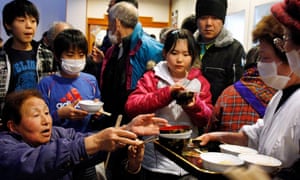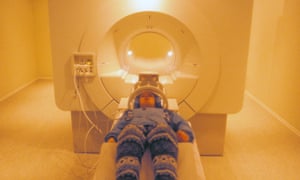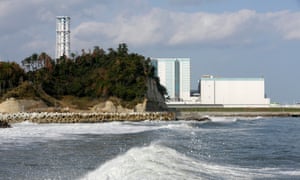Shunichi Yamashita knows a lot of about the health effects of radiation. But he is a pariah in his home country of Japan, because he insists on telling those evacuated after the 2011 Fukushima nuclear accident that the hazards are much less than they suppose. Could he be right?
Yamashita was born in Nagasaki in 1952, seven years after the world’s second atomic weapon obliterated much of the city. “My mother was 16 years old when the bomb dropped and she was two miles away,” he told me at his office in the city, where he still lives with his mother, who is now 88.
After growing up in the traumatised city, Yamashita dedicated his life to researching the health of survivors of the Nagasaki bomb and other victims of nuclear atrocities and disasters. He has visited Ukraine more than 100 times since the world’s worst nuclear accident there, at Chernobyl in 1986. He believes that, apart from the 28 immediate deaths among firefighters and maybe 50 victims of untreated thyroid cancers, the death toll from radiation has been small.
When a tsunami flooded the Fukushima Daiichi power station in Japan in March 2011, and put its reactors into meltdown, he rushed to the scene. He took up a post advising the local authorities about radiation and helped set up a health survey of the 150,000 people evacuated in the days after the accident.
But two years later, he was all but drummed out of the prefecture. He had become a pariah. His biggest crime was to tell people to smile. “It was at a public meeting, 10 days after the accident,” he told me. “Everybody was very stressed. I said don’t worry too much. Relax. Smile. My audience understood me. They realised the importance of relaxation. It would boost your immune system. But later, people used it to attack me.”
Yamashita became a lightning rod for discontent about the accident, says Keita Akakura, the PR man at the Fukushima Medical University (FMU), about 40 kilometres from the power plant. “In the world of the internet here, he’s a demon.”
There was widespread panic in the days after the tsunami. The earthquake and flood wave killed more than 15,000 people along Japan’s east coast and triggered the Fukushima accident. The government gave out no information about radiation levels and people had no idea if they were going to die. Even doctors were in the dark. “We had no information for 10 days,” says Koichi Hasegawa, a doctor at the FMU.

Fearing for their lives, nurses deserted their patients. Doctors from outside would not offer help. Even the Red Cross withdrew its staff, abandoning hospitals and evacuation centres where thousands of victims of the tsunami and evacuees from the nuclear accident were gathering. Rescue supplies sent from Tokyo weren’t delivered because nobody would drive them into the radioactive “danger zone”.
It only later emerged that the radiation received by the public had been trivial. Many still don’t believe it. “Less than 1% of the affected people got a dose of more than 1 millisievert from external exposure,” says Sae Ochi, a paediatrician who went to Fukushima as a volunteer after the accident. The global average annual background dose from natural sources of radiation is about 3 millisieverts in a year.
But by then the damage was done. Seven years on, many people in Japan say they will never listen to nuclear experts again, including radiation doctors. Some of those experts call this “radiophobia”, but that is to blame the victims when the real problems lie elsewhere. So what harm was done?
In most nuclear accidents, the biggest concern is the risk of getting thyroid cancer from the release of radioactive iodine-131. Iodine-131 is nasty. It has a half-life of only eight days, so it doesn’t stick around. But if breathed in or ingested, for instance, in milk from cows grazing on contaminated pastures, it concentrates in thyroid glands and can cause thyroid cancer that emerges within a few years. Children are especially at risk. The only prophylactic is to give exposed people tablets of non-radioactive iodine to flood their thyroid glands and prevent uptake of the radioactive version.
There was an epidemic of thyroid cancer after Chernobyl. Radioactive iodine was also released during the Fukushima accident, though only about a tenth as much as at Chernobyl. Doctors I spoke to all agreed that the actual uptake by people near the plant was tiny. This is because most of the fallout initially headed out to sea, because the authorities quickly removed potentially contaminated foodstuffs from sale and because iodine tablets were issued.

Nonetheless, they began a long-term screening programme among Fukushima’s children to make sure there were no ill-effects. And that’s where the problems began.
An initial ultrasound survey of thyroid glands two years after the accident – well before any cases of thyroid cancer from radiation would be expected to show up – found large numbers of cysts and nodules on thyroid glands. There were 113 cases of thyroid cancer, compared with the four that doctors would expect to diagnose in a normal population of the same size without screening.
The doctors had seen that initial screening as a baseline for future research. But there was an outcry, with headlines proclaiming a 30-fold increase in thyroid cancer. As one local politician, Baba Isao, told me: “If you say radiation doesn’t cause a problem, how can we have so many cases? The government can’t give an answer to that.”
Well, it can and does, says Ken Nollet, the American director of radiation health at the FMU. Any group will harbour undiagnosed thyroid abnormalities, including cancers. Screening finds them. The high rates were to be expected.
But the doctors were on a hiding to nothing. As Nollet said: “It’s very difficult to convince the public about this. And when we try, we are seen as complicit in nuclear power.”
If most medical researchers believe that there will be no surge of thyroid cancer cases, what about leukaemia and other cancers, which take much longer to show up? Is there an epidemic to come?
Here, there is more contention among the experts. Some argue that any radiation dose, however low, adds to cancer risks. If so, then a few hundred people scattered across Fukushima could eventually die from the extra radiation. But others say there is no evidence of increases in cancer among populations around the world who have been exposed at the levels experienced in Fukushima. “We don’t expect any health effects from radiation at Fukushima,” says Gerry Thomas of Imperial College London.

So Fukushima may have been one of the safer places to be during the tsunami. While thousands along the coast drowned, it may be that nobody either has or will die from the radiation released by the accident.
But there have been plenty of other ways to die. And there have been real and profound health consequences of the nuclear accident that doctors say the authorities cannot escape.
For one thing, the evacuation was chaotic. The able-bodied were herded out, but others were forgotten. Some invalids and old people left behind died of dehydration and hunger in their homes, says Ochi. “One woman called the ambulance from within the exclusion zone because she needed regular oxygen therapy and nobody had come to give it.”
Somewhere between 40 and 60 old people died either through being left behind or because of the immediate trauma of their removal.
A study of more than 1,200 old people in local care homes found that those who were evacuated were three times more likely to have died in the next two years than those who had not been evacuated. It wasn’t the radiation that was killing them, it was the stress of evacuation, says Claire Leppold, a doctor in Minamisoma, a town near the evacuation zone.
A further wave of deaths resulted from stress among evacuees, says Leppold. There have been around 85 suicides linked to the accident and evacuation. Many more people have fallen into non-lethal depressions. They drink more, exercise less, spend hours watching videos and no longer feel in charge of their lives or able to understand what had happened to them. “The evacuation may have been more dangerous than the disaster for this population,” she says.
One evacuee, gardener Ryoko Ando, wrote a paper for a medical journal describing how “radiation had no role in our consciousness until then; suddenly, we found that it was part of our lives, without having a yardstick to gauge it and form a judgment… we found ourselves drowning in numbers [and] strange units we have never heard of, such as the sievert.”
A quarter of young girls surveyed feel they might not be able to have a baby because of the accident. Many parents fear their children will get thyroid cancer. Masaharu Maeda, the head of disaster psychiatry at the FMU, calls it “the Godzilla effect”, after the film about a mutant monster created by atomic tests.
Some call this “radiophobia”, suggesting that this absolves the nuclear industry of responsibility. But these are real psychological and social consequences of the accident – and are surely just as much the responsibility of the operators of the plant as any radiological consequences. And they mean that the prospects for repopulating the region, including four ghost towns where 150,000 people once lived, remain small.

The stricken reactors still contain terrifying amounts of radiation. Cleaning up the mess will take decades and tens of billions of dollars. But outside, away from a few hotspot zones in the mountains, most of the radioactive isotopes that fell in the evacuated zone have now decayed away and huge amounts of contaminated soil and vegetation have been bagged up and removed.
The government says it should be safe to return once doses fall below 20 millisieverts a year. That is seven times average background levels from natural radiation, but much lower than the level experienced by millions of people worldwide from natural radiation, including many in Britain.
Yamashita believes that policy is too cautious. He argued right after the disaster for a threshold of 100 millisieverts a year. “People could have been returning after a month, when the iodine had disappeared,” he says now. He believes the psychological risks of staying away have long exceeded the radiological risks of returning. Many doctors I spoke to quietly agreed with him.
But in truth most evacuees do not want to go back. They don’t trust the experts and, anyway, they got compensation and have new lives elsewhere. A year ago, Namie, an evacuated town close to the plant, was declared safe, but so far only a few hundred of its 20,000 former residents have returned.
In the empty lands around Fukushima today, most of the radiation is long since gone. But the ghosts linger.
This is an edited extract from Fallout: Disasters, Lies and the Legacy of the Nuclear Age by Fred Pearce published by Portobello (£14.99). To order a copy for £12.74 go to guardianbookshop.com or call 0330 333 6846